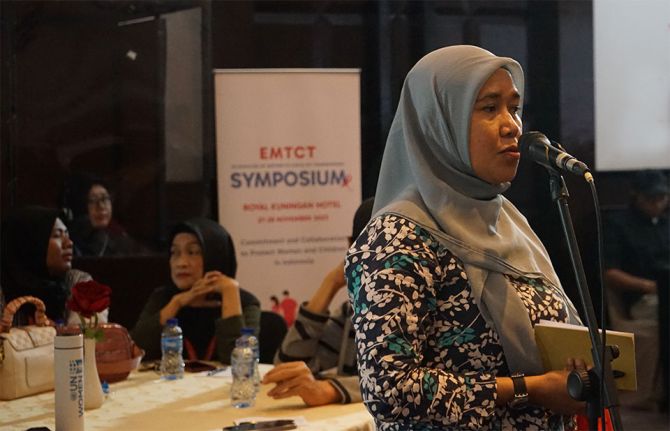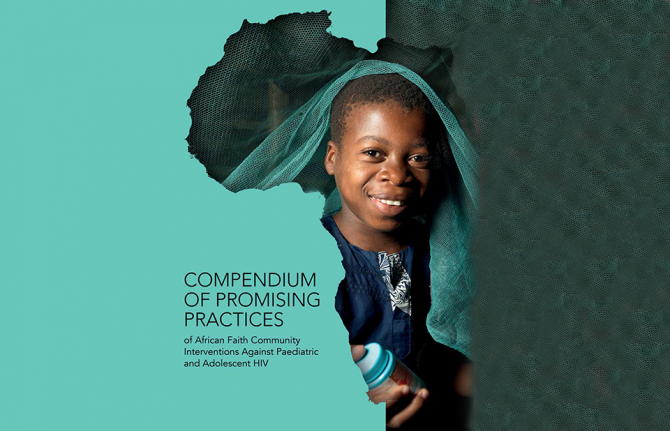
Feature Story
Signs of progress in global response to Children and AIDS
16 January 2007
16 January 2007 16 January 2007
Photo credits : UNICEF
Just over a year ago, UNIC EF, UNAIDS and other partners launched Unite for Children, Unite against AIDS initiative to highlight the missing face of the child in the AIDS response.
On Tuesday, 16 th January 2007 UNICEF released the “Children and AIDS: A Stocktaking” report summarizing progress on children and AIDS since the initiative was launched in October 2005 and highlighting important breakthroughs and progress noted in the global response to Children and AIDS since the campaign launch. Such achievements include real progress noted in some countries in preventing HIV transmission from mothers to children and providing treatment for children living with AIDS.
“There is an urgent need to help children impacted by AIDS,” UNICEF Executive Director Ann M. Veneman said. “Unite for Children, Unite against AIDS is focused on ensuring treatment for HIV-positive children, prevention of mother-to-child transmission and assisting children who have been orphaned by AIDS. We must build momentum to achieve positive results for children.”
Within the UNICEF report, findings are presented on four key areas: preventing mother-to-child transmission, access to AIDS treatment, preventing new HIV infections and support to orphans and vulnerable children.
Preventing mother-to-child transmission
The stocktaking report finds that there are signs of considerable progress in the area of preventing transmission of HIV from mother to child (PMTCT). Some high-prevalence countries in Eastern and Southern Africa have shown particularly encouraging results. In Namibia for example, the percentage of HIV-infected pregnant women who received treatment for preventing HIV transmission to their infants increased from six per cent in 2004 to 29 per cent in 2005. In South Africa the percentage increased from 22 per cent in 2004 to 30 per cent in 2005.
However, despite these gains, the report details how the overall percentage of pregnant women receiving treatment for preventing transmission remains extremely low. In 2005, it was estimated that only nine per cent of pregnant women with HIV in low- and middle-income countries were receiving treatment for preventing HIV transmission to their children.
Access to AIDS treatment
The report also notes particular momentum in the provision of treatment to children living with AIDS, a result of improved testing, better health worker skills, lower drug prices and simpler formulations. Several countries – including Botswana, India, Rwanda, South Africa and Thailand – have been able to scale up HIV treatment for children by integrating it into treatment sites for adults.
Globally, still only one in ten children needing antiretroviral treatment receives it. However, prices of antiretroviral drugs for children have come down dramatically over the past 12-18 months. The report notes that in 2006, the Clinton Foundation HIV/AIDS Initiative negotiated a reduction in the cost of paediatric AIDS treatment to less than $0.16 per day, or $60 per year, helping to spur competition in the development of paediatric formulations.
Preventing new HIV infections
HIV Prevention responses are displaying renewed attention on the need to focus strategies on adolescents and young people most at risk, according to the report. The report notes that young women should be specially targeted since globally, a higher number of young women are being infected than men.
New evidence suggests that declining HIV prevalence in Kenya, urban areas of Cote d’Ivoire, Malawi and Zimbabwe, and in rural areas of Botswana, has resulted from the adoption of safer sexual behaviour by young people. In more than 70 countries surveyed, testing and use of counselling services increased from roughly 4 million people in 2001 to 16.5 million in 2005.
Supporting orphans and vulnerable children
The disparity between orphans and non-orphans in access to education is being significantly reduced in several countries, partly due to the abolition of school fees, according to the report.
The report notes that collecting and disaggregating data by age group and gender is one of the most vital, simple and effective ways of putting children on the AIDS agenda. This report uses for the first time a baseline against which new and existing data can be measured in order to identify discernible trends regarding children and AIDS.
Links:
Read Stocktaking report (2 MB, pdf)
Read 'Preventing mother to child transmission (PMTCT)' Fact Sheet (37 kb, pdf)
Read 'Providing pediatric treatment' Fact Sheet (37 kb, pdf)
Read 'Prevent infection among adolescents and young people' Fact Sheet (37 kb, pdf)
Read 'Protecting and supporting children affected by AIDS' Fact Sheet (39 kb, pdf)
Know more about "Unite for Children, Unite against AIDS" campaign (1,4 MB, pdf)
Visit "Unite for Children, Unite against AIDS" Web Site


